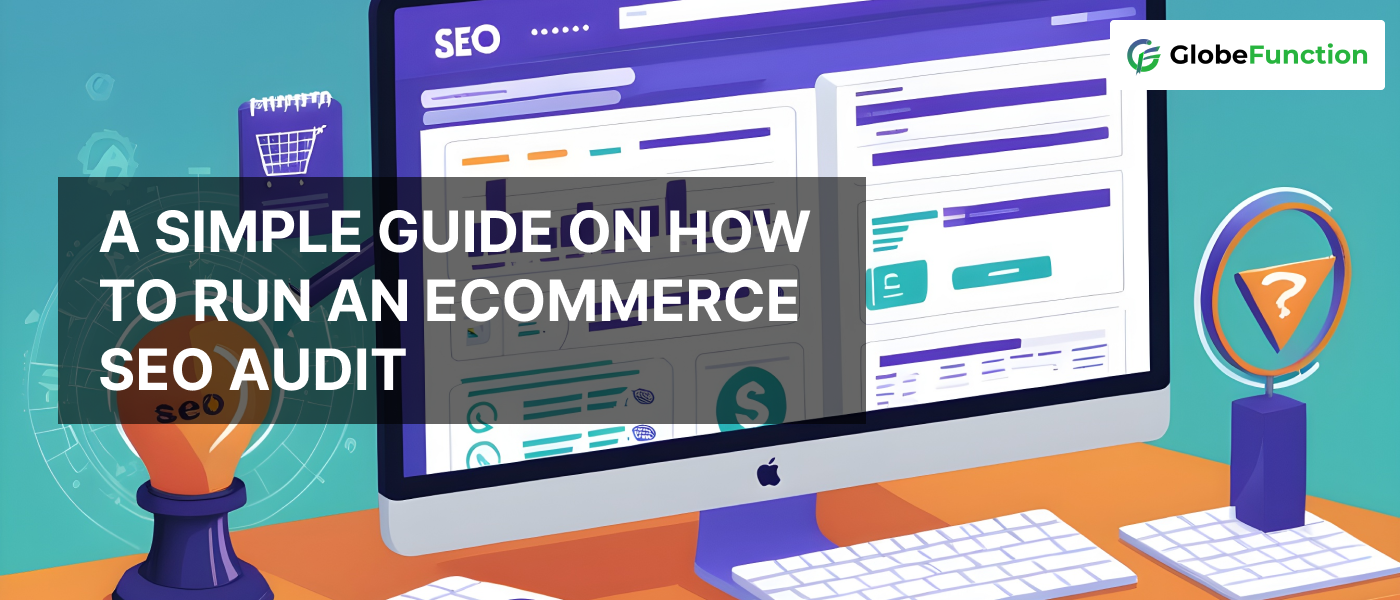Introduction:
Running an Ecommerce SEO audit for your online store is like taking your business for a health checkup. This straightforward guide aims to simplify the process, ensuring that even those without technical expertise can enhance their online store’s performance. By identifying and addressing key areas, you’ll be on the path to boosting your store’s visibility and attracting more customers.

webomaze.com
1. Understanding the Basics of Ecommerce SEO Audits:
An Ecommerce SEO audit is your way of examining how well your online store is doing in the digital world. It involves looking at different aspects, such as keywords, website structure, and content quality, to make sure your store is easily found by people searching online. By understanding the basics of an SEO audit, you can start making improvements that will help your online business thrive.
2. Start with Keyword Analysis:
Keywords are the words people type into search engines when looking for products. Analyzing and selecting the right keywords for your products is like choosing the best ingredients for a recipe. Use simple tools to find keywords that match what your customers are searching for. By incorporating these keywords into your product pages, you’re making it easier for potential customers to discover your online store.
3. Check Your Website’s Structure:
Just as a neat and organized physical store attracts customers, a well-structured website appeals to online visitors. Ensure your website’s pages are logically arranged, making it simple for users and search engines to navigate through your products. An organized website structure not only improves the user experience but also signals to search engines that your online store is well-managed and trustworthy.
4. Evaluate Page Loading Speed:
Fast-loading pages are crucial for keeping visitors interested. Similar to a quick and efficient cashier at a store, a fast website ensures a positive user experience. Check your website’s speed and optimize elements like images to make sure your online store loads quickly. This not only satisfies users but also earns favor with search engines, leading to better rankings.
5. Review Content Quality:
Product descriptions are like labels on physical store shelves, providing information to customers. Ensure your product descriptions are informative, unique, and easy to understand. Quality content not only helps customers make informed decisions but also shows search engines that your online store provides valuable information. Improve your content, and you’ll likely see positive changes in both user satisfaction and search engine rankings.
6. Examine URL Structure:
URLs are like addresses for your online store. Make sure they are user-friendly and contain relevant keywords. A clear and simple URL structure not only helps users remember your web address but also contributes to better search engine rankings. Optimizing your URLs is a small yet effective step toward creating a seamless online shopping experience.
7. Mobile Optimization Matters:
Mobile optimization is about making your online store look good and work well on smartphones and tablets. This is crucial because many people shop using their mobile devices. Ensure your website design is responsive, adapting to different screen sizes. A mobile-friendly online store not only meets the expectations of modern shoppers but also earns favor from search engines, leading to improved SEO.
8. Investigate Meta Tags:
Meta tags, like title tags and meta descriptions, provide important information to search engines. Check and optimize these tags to accurately represent your products and encourage users to click through to your online store. Crafting clear and compelling meta tags is like creating attractive signs that entice customers to explore your store further.
9. Internal Linking:
Internal links guide users through your online store, just like signs in a shopping mall. Ensure you have a solid internal linking structure, connecting related products and pages. This not only enhances user navigation but also assists search engines in understanding the hierarchy and importance of different content on your ecommerce site. Strengthening your internal links is like creating a well-marked path for visitors to follow.
10. Image Optimization:
Optimizing product images involves using descriptive alt tags and choosing relevant file names. By doing this, you make your images more search engine-friendly and enhance the accessibility of your online store. This simple step is like presenting your products in the best light possible, ensuring they stand out in search engine results and appeal to a wider audience.
11. Social Media Integration:
Integrating your online store with social media is like extending your storefront to a broader audience. Share your products on social platforms, attracting more visitors and creating a positive online presence that search engines value. Social media integration is like word of mouth in the digital age, spreading the word about your products and contributing to increased visibility.
12. Backlink Assessment:
Evaluating the quality of backlinks to your online store is like checking the reputation of your business through recommendations. Building high-quality backlinks from reputable sources enhances your store’s credibility and improves search engine rankings. Quality backlinks are like trustworthy referrals, signaling to search engines that your content is valuable and worthy of recommendation.
Conclusion:
Running an Ecommerce SEO audit may sound complex, but it’s like giving your online store a friendly check-up. By following these simple steps and making necessary improvements, you’re ensuring your store remains healthy and competitive in the digital marketplace. Remember, it’s not about using complicated terms but about making your online store more visible, user-friendly, and trustworthy for both customers and search engines alike.
FAQs:
Q1: Why is it important to run an SEO audit for my online store? A: Running an SEO audit helps identify areas for improvement, ensuring your online store is search engine-friendly and easily discoverable by potential customers.
Q2: Can I run an SEO audit for my online store without technical skills? A: Absolutely! This guide provides simple steps that anyone can follow to perform a basic Ecommerce SEO audit without advanced technical knowledge.
Q3: How often should I run an SEO audit for my online store? A: Performing an SEO audit every few months is recommended to stay updated on the health of your online store and make necessary improvements for sustained succes














